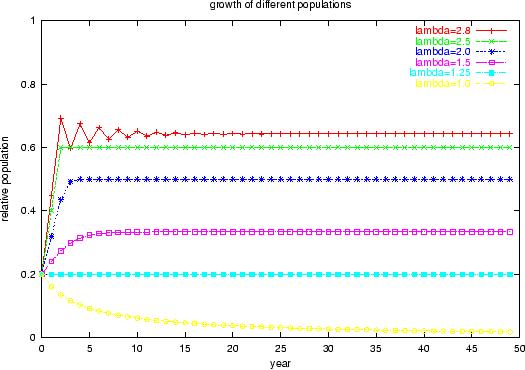 |
If we go up with the maximal growth rate to a value about
![]() (figure 17) the population is oscillating around a certain value.
(figure 17) the population is oscillating around a certain value.
For a even higher values we can observe a full range of different behaviours. In figures 18 to 21 some examples are shown.
Figure 22 shows the behaviour of populations after
about 1000 years. The relative population after this time
is given for different values of the maximal growth rate ![]() .
In order to see if there is an fluctuation in the population
after this time the values are plotted for the first 16 years
after 1000 years.
.
In order to see if there is an fluctuation in the population
after this time the values are plotted for the first 16 years
after 1000 years.
This diagram shows:
| max. growth rate | behaviour |
|
|
population will die out |
|
|
population is stable after a sufficient long time,
the relative population is exactly
|
|
|
population fluctuates between two values |
|
|
population fluctuates between four values |
|
|
number of values the population fluctuates
between goes up to |
|
|
many different types of behaviour including "chaotic" behaviour for certain values |